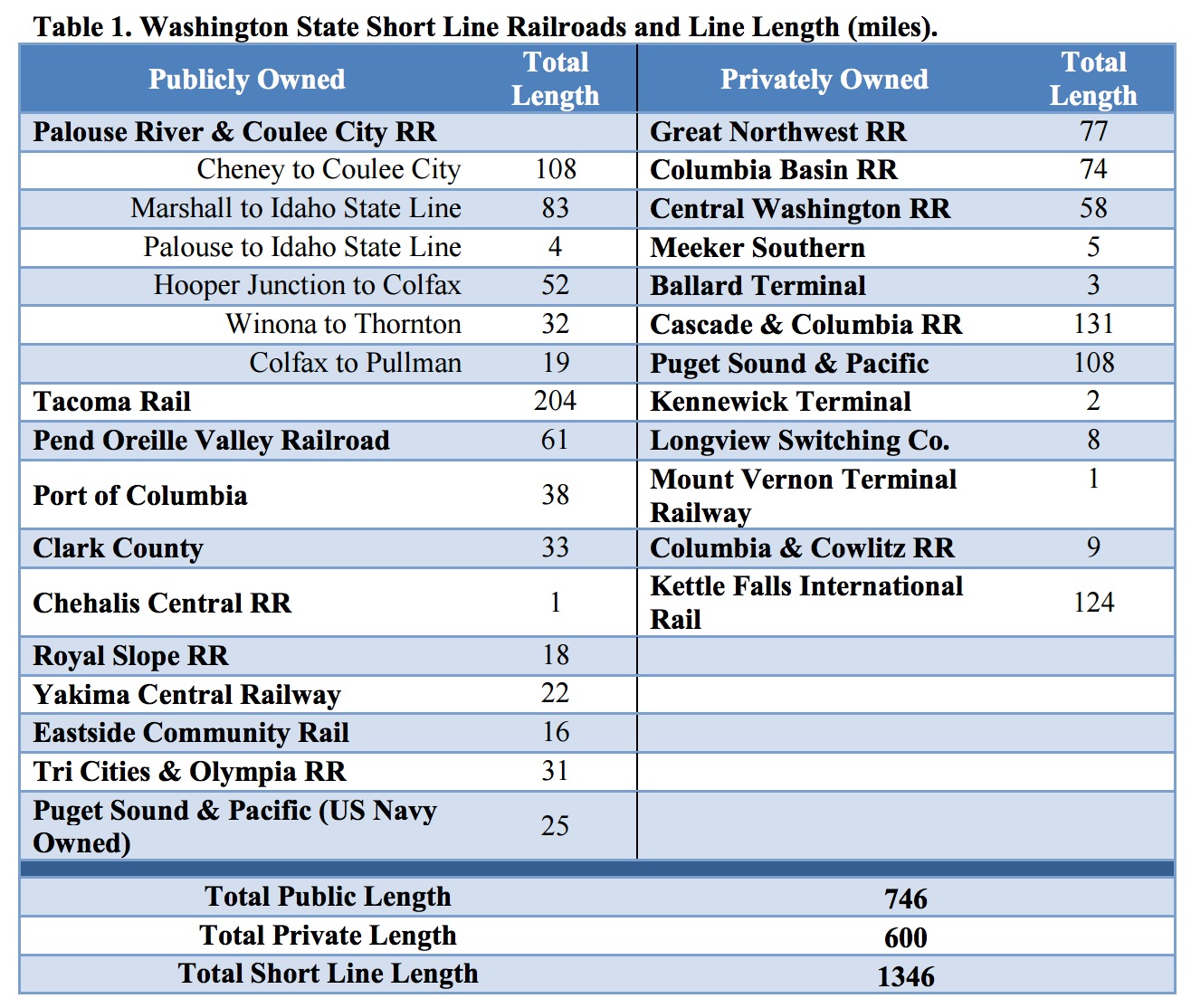WASHINGTON STATE DEPARTMENT OF TRANSPORTATION
Executive Summary
Introduction
The Washington State Short Line Rail Inventory and Needs Assessment study provides a framework for a data-based evaluation of the condition and capital needs of the entire short line rail system within the state. The Washington State Legislature in ESSB 6001 Section 222 directed the Washington State Department of Transportation (WSDOT) to provide a report assessing the current conditions and needs of the short line railroads by June 30, 2015.
This study was a collaborative effort between WSDOT and researchers with the Freight Policy Transportation Institute (FPTI) at Washington State University (WSU). The research team is very appreciative of the input and advice and feedback from a group of expert reviewers composed of short line operators, owners and rail-dependent industry representatives.
Washington State Short Line System
Short line railroads are those lines that fall below regional railroad classification, are at least 350 miles and/or have revenue above $37 million but less than Class I standards, as well as all switching and terminal railroads. Washington State has nearly 1,400 miles of short lines, in both private and public sector ownership.
The configuration of the short line system in Washington and throughout the nation is largely a result of the 1980 Staggers Act that deregulated the railroad industry and allowed the Class I railroads [Burlington Northern-Santa Fe (BNSF) and Union Pacific (UP) in Washington] more freedom to take on cost reduction strategies. A major component of these strategies was the sale or lease of line segments that were of low or no profit to the railroads. These sales and leases lead to the creation of just over 450 short line railroads throughout the country. Twenty-two such lines remain in Washington today. These 22 lines serve a multitude of functions throughout the state. They often serve as first and last mile segments of longer rail transports, making them a vital component of the economic wellbeing of the regional economies in which they operate. In 2011, short lines were involved in 28 percent of all rail shipments nationwide.
The 2014 ‘Washington State Rail Plan’ and ‘Washington State Freight Mobility System Plan’ identified important issues facing the state’s short line rail system. Key among them is the lack of historic investment to adequately maintain and improve the system. The lack of recent investment is compounded by over twenty years of inattention to maintenance needs when the lines were owned by the Class I railroads. Recognizing that quantifying the scope of these investment needs is a critical component of maintaining a viable system, the Legislature directed WSDOT to inventory and assess the magnitude of short line infrastructure lagging behind current industry standards for efficient operations.
Responding to the legislative request, this report provides:
1. A high-level inventory of existing infrastructure conditions on short line railroads in Washington;
2. Detailed preliminary estimate of the total investment needed to bring the system up to modern industry standards;
3. Case studies highlighting the role short line railroads and regional trans-load centers play within the state’s regional economies;
4. Review of funding strategies employed by other states to support short line rail roads.
Download full version (PDF): Washington State Short Line Rail Inventory and Needs Assessment
About the Washington State Department of Transportation
www.wsdot.wa.gov
The Washington State Department of Transportation is the steward of a multimodal transportation system and responsible for ensuring that people and goods move safely and efficiently. In addition to building, maintaining, and operating the state highway system, WSDOT is responsible for the state ferry system, and works in partnership with others to maintain and improve local roads, railroads and airports, as well as to support alternatives to driving, such as public transportation, bicycles and pedestrian programs.
Tags: Short-Line Rail, WA, Washington, Washington State Department of Transportation, WSDOT







 RSS Feed
RSS Feed